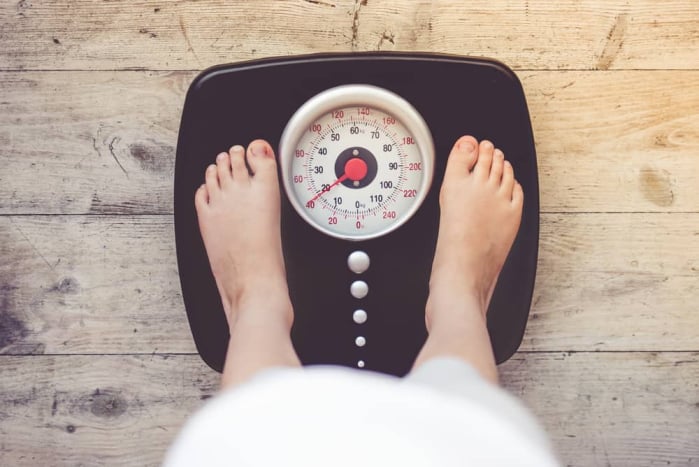Osteoporosis Prevention Steps To Stay Strong Bones
Osteoporosis is often synonymous with elderly (elderly). However, this bone loss disease can actually be experienced by anyone, from children to adults. Therefore, bone health is not something that can be underestimated. Various efforts to prevent diseases that interfere with the human movement system need to be done early on. Then, what can you do if you don’t want to experience osteoporosis? Come on, see the full explanation below.
Osteoporosis prevention measures
You certainly want to have healthy and strong bones, especially as you enter old age. Moreover, the older you get, the higher the risk of experiencing this musculoskeletal disorder. Therefore, practice some tips that you can do to prevent osteoporosis while keeping your bones strong.
1. Exercise regularly

Prevention of osteoporosis can be done by exercising regularly. The more actively you move and exercise, the more bone density and strength will be.
Therefore, physical activity during childhood and adolescence is highly recommended because it provides provisions for strong bones in the future. By the age of 30 the bone density reaches its maximum peak.
One of the best ways to exercise to prevent osteoporosis is by doing weight training (weight bearing) and resistance training. This type of exercise can be done to prevent osteoporosis for children to adults.
Weight training is an exercise that is done by carrying body weight against gravity. Running sports, aerobics, hiking, and tennis is a type of weight training that can be done.
Meanwhile, resistance training is a sport that aims to strengthen muscles and build bones. When you have strong muscles, you maintain balance, which minimizes the risk of falls and injuries. Lifting weights is one example of resistance training that you can try to practice.
There are also sports options for children, such as walking, running and climbing for children under 6 years old. Meanwhile, children aged 6 years and over can routinely do a more diverse range of sports activities, from jumping rope, ball sports, rock climbing, to sports using racket or dancing.
You can also apply healthy exercise movements for stroke sufferers. Even though it is done by people who have had a stroke, there’s nothing wrong with applying healthy exercise for prevention.
2. Increase calcium intake
Calcium is a good nutrient for maintaining healthy and strong bones and preventing fractures due to osteoporosis. So, do not let you lack calcium in the body. At least, meet your daily calcium needs.
If you are in the 18-50 age group, your body needs 1000 milligrams (mg) of calcium every day. After women turn over 50 years old and men enter 70 years, your calcium needs increase, which is up to 1200 mg per day.

You can meet calcium needs as an effort to prevent osteoporosis by eating calcium-rich foods, such as:
- Various low fat dairy products.
- Almond nut.
- Green vegetable.
- Canned salmon and sardines.
- Cereals high in calcium.
- Orange juice.
- Soy products, such as tofu.
You can also take calcium supplements if you feel you can’t meet your calcium needs from food. However, it is better to consult with your doctor first.
3. Take vitamin D.
Vitamin D can increase the body’s ability to absorb calcium and also improve bone health. One way to meet the needs of vitamin D is to regularly bask in the sun for about 10-15 minutes. However, make sure to always use sunscreen when ‘dealing’ with the sun, yes.
Apart from sunlight, you can also get vitamin D intake to prevent osteoporosis by consuming foods or supplements. The daily vitamin D requirement for ages 51-70 years is 600 international unit (IU). Meanwhile, after entering the age of 70 years and over, the need increases to 800 IU.
Good foods as a source of vitamin D are fish such as salmon and tuna. In addition, mushrooms, eggs, milk, and cereals can also help you increase your intake of this vitamin. Meanwhile, ask your doctor about using vitamin D supplements for osteoporosis prevention.
Vitamin D deficiency can be a contributing factor to bone loss. Therefore, prevention from osteoporosis can be done to meet the body’s need for vitamin D every day.
4. Meet protein needs

About 50 percent of bone is made of protein. Now, if you want your bones to stay healthy and strong, you must meet your daily protein needs.
Low protein intake can reduce calcium absorption in bones. As a result, the process of bone formation is inhibited and bones become brittle easily.
Therefore, if you want to prevent osteoporosis, meet your daily protein needs by eating good protein sources such as fish, meat, eggs, cheese, milk, and so on. A diet high in calories and protein can also help you lose weight while maintaining your bone mass.
5. Maintain a healthy weight

Apart from eating nutritious foods and exercising, maintaining body weight is equally important for maintaining bone health. This is because people who are underweight are at risk of osteopenia and osteoporosis.
Low body weight is a major factor in decreased bone density and bone loss. Usually, this happens to women who have experienced menopause as a result of the decrease in the hormone estrogen.
Therefore, keep your body weight ideal to protect bone health. Your ideal weight can be determined using the BMI calculator or at bit.ly/indeksmassatubuh.
6. Avoid smoking
According to the National Osteoporosis Foundation, smoking can increase the risk of osteoporosis. Therefore, if you are a smoker, it is better to stop and practice a healthy lifestyle for your bones, for example eating bone strengthening foods.
Do not let you wait for the symptoms of osteoporosis first to adopt a healthy life and stop smoking. Of course it is better to prevent than to have to undergo treatment for porous bones.
Hello Health Group does not provide medical advice, diagnosis or treatment.